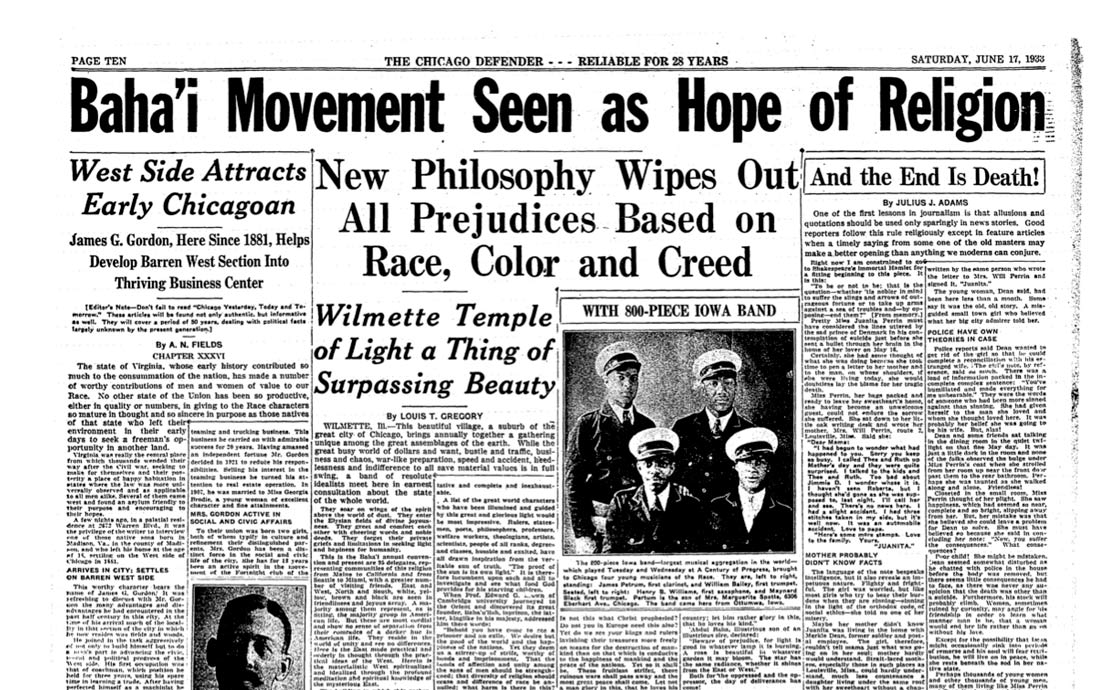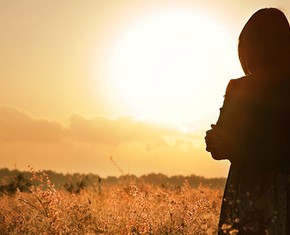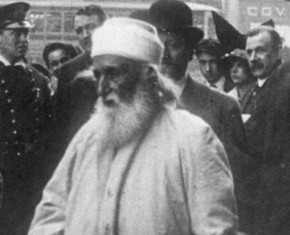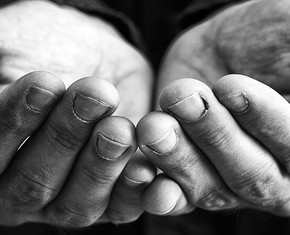The views expressed in our content reflect individual perspectives and do not represent the authoritative views of the Baha'i Faith.
Robert Sengstacke Abbott, the publisher of America’s preeminent Black newspaper, The Chicago Defender, wrote and published many articles about the Baha’i Faith and its principles of racial unity.

In many regards, because Baha’is have no clergy and do not proselytize their beliefs, those Chicago Defender articles may have been partially responsible for the growth of the Baha’i Faith among African Americans in the United States in the early part of the 20th century – and for the remarkable racial diversity the American Baha’i community continues to exhibit today. That diversity reflects not only the efforts of the early African American Baha’is, however. Instead, it emerged directly from the emphasis put on the oneness of humanity by Baha’u’llah, the prophet and founder of the Baha’i Faith. He wrote:
That all nations should become one in faith and all men as brothers; that the bonds of affection and unity between the sons of men should be strengthened; that diversity of religion should cease, and differences of race be annulled — what harm is there in this?… These strifes and this bloodshed and discord must cease, and all men be as one kindred and one family.
The early African American Baha’is fully understood the penetrating power of Baha’u’llah’s teachings on racial unity, and those teachings attracted some of the leading Black activists, thinkers, and leaders to the Faith. As just one example among many, according to Mark Lloyd Perry, who wrote his University of Chicago Ph.D. dissertation on the early years of the Chicago Baha’i community, Robert S. Abbott “vigorously promoted the Baha’i Faith” in The Chicago Defender. For instance, shortly after the 1934 Baha’i national convention – at which Abbott publicly declared his wholehearted belief in the Baha’i Faith – the Defender published a photograph taken in Abbott’s own office of the Schoenys, a white family from Phoenix, Arizona. The caption read, in part:
“This picture was made in The Chicago Defender office where the Schoenys were guests of Editor Robert S. Abbott on a tour of the plant of the World’s Greatest Weekly. They were also Mr. Abbott’s guests at luncheon Monday. The Schoenys, who motored here from their western home to attend the conference of their faith, attest to the fact that here is at least one religion in which the color line is unknown.“
After his public declaration of belief on Sunday, June 3, 1934, on December 15 of that same year, Robert S. Abbott personally wrote and published, in the Chicago Defender Features section, this article: “Baha’ism Called the Religion that will Rescue Humanity: Christianity Has Proved Faithless To Its Trust, Says Robert S. Abbott; Praises Mohammedanism.” The article comprised “Installment XLIV” of a series of editorials that Abbott published, with his photograph featured as well as his by-line. This was a somewhat daring feature article, given its critique of Christianity, which is not typical of Baha’i self-representation:
“The Christian doctrine, though capable of great good when rightly interpreted, has been perverted by the apostles of the faith. Thus, today after nearly 3,000 [sic: read “2,000”] years of experimentation, Christianity is still on trial. Why?—because it has never emphasized racial unity or oneness of mankind as a central motive of its gospel. …
ABDU’L-BAHA POINTS THE WAY
Fortunately for the modern world and for us blacks, a new religious philosophy is gradually neutralizing the provocative agents of strife and racial antipathy. For more than eighty years, the Baha’i Cause has been steadfastly presented to the world as the expression for this age and the fulfillment of that which was but partially revealed in previous dispensations. Abdu’l-Baha dedicated his life to the propagation of a creed which is now effecting a permanent revolution in the psychology and collective action of the world.

Where religion has sanctioned division and difference, the Baha’i institution sanctions unity, fellowship, co-operation. Like a healing element, it is aimed at removing the physical and mental reasons for religious, racial and class prejudice, and [is] upholding a defined standard of reality and equality embracing every member of the community. Here the circle of spiritual experience at last joins, as prayer and worship are allied directly to creative service, eliminating static subjective elements from religion and laying a foundation for a new and higher type of human association.
A SOUND GOSPEL
My experience with the followers of this cult [sic, here meaning “religion”] has convinced me of the true and sincere humanitarian gospel which animate their souls. They fear not to break bread with the members of the darker races, for the cardinal theme of their spiritual postulate is the oneness of mankind. They consecrate themselves to the establishment of a bond of union between the hearts of men so that different races and souls in every capacity may come together in order that love and agreement should be manifest between them.
For thousands of years, the human race has been at war. Enmity and hatred have ruled. Now comes a new prophet bearing a new warrant of love, amity and peace. Baha’is seek to advance religion to its ultimate cultural sphere in which all consciousness of racial differences and religious traditions shall be flooded out by the spiritual light of greater understanding and love. The frontiers of civilization will not, appreciably, be advanced, and the souls of nations will not be retrieved from the abomination into which they have sunk, unless the fundamental principles embodied in the teachings of Abdul-Baha are faithfully and fervently embraced. No religion can bring peace which sanctions prejudice and discrimination at its very door.“
This statement, in a certain sense, may be considered Robert S. Abbott’s public declaration, in national press, of faith in the “Baha’i Cause,” as the Baha’i Faith was often referred to back then. (Note that Abbott’s reference to Abdu’l-Baha as a “prophet,” while well-intentioned, is technically incorrect, as the prophet-founder of the Baha’i Faith is Baha’u’llah, who designated his eldest son, Abdu’l-Baha, as successor, interpreter, and perfect exemplar (or role model) of Baha’u’llah’s universal and unifying teachings.)
In May of 1939, Abbott published another noteworthy article – “Leaders of Baha’i Faith Pay Visit to Publisher: Spreading the Baha’i Movement” – which read, in part: “Mesdames Ethel Gross and Vernita Mason, delegates from Boston, Mass, to the thirty-first convention at Bahai Temple in Wilmette, took time out to visit their friend, Robert S. Abbott, at his home on South Parkway, Tuesday afternoon, May 2.”
Over the next several years, many other articles on the Baha’i religion followed. From June 3, 1934 to the date of Abbott’s death on February 29, 1940, the Defender published 28 articles with the word “Baha’i” in the headline. (Search at The Chicago Defender search website, http://pqasb.pqarchiver.com/chicagodefender/advancedsearch.html, 12/20/2005, website no longer available.) Another 10 articles have the word “Bahai” without the apostrophe, for a total of 38 headlined articles on the Baha’i Faith were published during the last years of Robert S. Abbott’s life. (Search at The Chicago Defender’s former search website, http://pqasb.pqarchiver.com/chicagodefender/advancedsearch.html, 12/20/2005.) There are 53 articles that mention “Baha’i” during this time period, such as these two stories: “Promote Race Amity” (Jan. 25, 1936), p. 12 (in “The Voice of the Church” section); and “Baha’is Hold Race Amity Assemblies” (Feb. 8, 1936), p. 4. Abbott authored two articles during this period. The first has already been mentioned. As for his second article – his personal review of The Baha’i World (a volume of 712 pages) – Abbott wrote:
“Thus we have here in succinct form the whole spiritual panorama of this world wide spiritual community. The doctrinal pronouncement of this religion commands [sic: read “commends”] itself particularly to us blacks. … [W]e should find an abiding joy, a spiritual haven for our souls in Baha’ism. For this faith has bridged the social chasms engendered by a difference in nationality, race, class and creed. It articulates mutual understanding and harmony. Thus black believers are accorded the spiritual equality of their white fellows. …
This indispensable testament should be in the library of every home for the spiritual comfort it affords the soul, and the penetrating light it casts upon the intellect.“
These, as well as articles published in the Defender prior to Abbott’s declaration as a Baha’i on June 3, 1934, resulted in unprecedented public exposure for the Baha’i Faith, perhaps the most sustained news coverage since Abdu’l-Baha’s highly-publicized North American speaking tour in 1912.
In his article prominently featuring his photograph and published shortly after his conversion, Robert S. Abbott publicly testified to his faith in the purpose and precepts of the Baha’i movement:
“If, during the twenty-eight years of my journalistic career I have been relentless in my campaign against race prejudice and discrimination, it is because I know the disastrous effects upon the human souls. Race prejudice would not have marred our civilization if the churches had fought it and met the issues in true Christian spirit. …
Against this background Bahaism stands as the supreme expression of all those modern religious tendencies animated by social ideals which do not repudiate the reality of spiritual experience but seek to transform it into a dynamic striving for unity. Bahaism, when clearly understood, gives the world the most potent agency for applying mystical vision or idealistic aspiration to the service of humanity. It makes visible and concrete those deeper meanings and wider possibilities of religion which could not be realized until the advent of Abdul Baha.”
As a result of Abbott’s 22-year interest in the Baha’i movement, dating from his meeting with Abdu’l-Baha in 1912 through to his conversion in 1934, and during his affiliation as a Baha’i during the last six years of his life, the Baha’i religion received what probably was its most widespread exposure among African Americans due to the numerous articles on the Baha’i religion published nationwide in The Chicago Defender.
Note: This two-part essay originated in this previously-published journal article by the author: “The Baha’i ‘Race Amity’ Movement and the Black Intelligentsia in Jim Crow America: Alain Locke and Robert S. Abbott.” Baha’i Studies Review 17 (cover date, 2011; publication date, 2012): pp. 3–46, available online.
















Comments
Sign in or create an account
Continue with Googleor